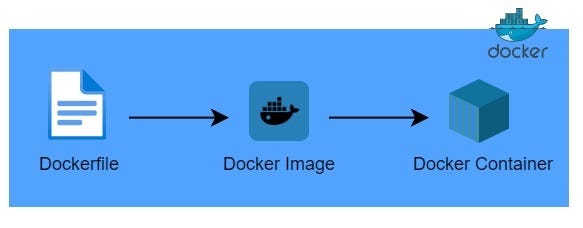In recent years, Docker has revolutionized the world of software development and deployment. As organizations increasingly adopt containerization, Docker has become a key technology. If you're gearing up for a Docker interview, let's dive into some essential questions and their detailed answers.
1. What is Docker?
Answer: Docker is an open-source platform that automates the deployment, scaling, and management of applications within lightweight, portable containers. Containers encapsulate an application and its dependencies, ensuring consistency across various environments.
Example: Imagine a scenario where you have a Python application. With Docker, you can package the application, its runtime, libraries, and dependencies into a single container, making it easily portable and executable on any system that supports Docker.
2. How are Containers Different from Virtual Machines?
Answer: Containers and virtual machines (VMs) both provide isolation, but they operate at different levels. Containers share the host OS kernel, making them more lightweight and efficient compared to VMs, which require a full OS stack for each instance.
Example: In a VM setup, you might run multiple instances of an OS like Ubuntu on a hypervisor. In contrast, containers share the underlying host OS, requiring fewer resources and enabling faster startup times.

3. What is Docker Lifecycle?
Answer: The Docker lifecycle involves creating, running, stopping, and deleting containers. It begins with defining a Docker image through a Dockerfile, which is then used to create a container. Containers can be started, stopped, and removed based on the application's lifecycle needs.
Example: Using the docker run command, you can start a container from an image. To stop and remove it, you would use docker stop and docker rm respectively.

4. What are Different Docker Components?
Answer: Docker consists of various components, including Docker Daemon, Docker Client, Docker Images, Docker Registry, and Docker Containers. The Docker Daemon manages containers and images, while the Docker Client allows users to interact with the daemon. Images are blueprints for containers, and the registry is a repository for sharing images.
Example: To build an image, you use the Dockerfile, and to run a container, you interact with the Docker Daemon through the Docker Client.
5. What is the Difference Between Docker COPY and Docker ADD?
Answer: Both COPY and ADD are used in Dockerfiles to copy files into the container. The key difference is that ADD allows for more functionality, such as fetching files from URLs and extracting compressed files, while COPY simply copies files from the host to the container.
Example:
# Using COPY
COPY ./app /app
# Using ADD
ADD https://example.com/files.tar.gz /files/
6. What is the Difference Between CMD and EntryPoint in Docker or Dockerfile?
Answer: CMD and ENTRYPOINT are instructions in a Dockerfile. CMD sets the default command and/or parameters, while ENTRYPOINT configures a container to run as an executable.
Example:
# Using CMD
CMD ["python", "app.py"]
# Using ENTRYPOINT
ENTRYPOINT ["java", "-jar", "app.jar"]
7. What are the Networking Types in Docker and What is the Default?
Answer: Docker supports various networking types, including bridge, host, overlay, and macvlan. The default is the bridge network, which isolates containers on the same host while allowing them to communicate.
Example: Creating a bridge network:
docker network create my_bridge_network
8. Can You Explain How to Isolate Networking Between Containers?
Answer: To isolate networking, you can use user-defined bridge networks, ensuring containers are in the same network for communication but isolated from other networks. Docker Compose is a helpful tool for defining multi-container applications with specific network configurations.
Example:
# Docker Compose
version: '3'
services:
web:
image: nginx
networks:
- my_network
networks:
my_network:
9. What is a Multi-stage Build in Docker?
Answer: Multi-stage builds in Docker involve using multiple FROM statements in a single Dockerfile. This helps create smaller and more secure images by separating the build environment from the runtime environment.
Example:
# Multi-stage build
FROM node:12 as builder
WORKDIR /app
COPY . .
RUN npm install
RUN npm run build
FROM nginx
COPY --from=builder /app/dist /usr/share/nginx/html
10. What are Distroless Images in Docker?
Answer: Distroless images are minimal Docker images that only contain the application and its runtime dependencies, without a package manager or OS layer. This reduces the attack surface and improves security.
Example:
# Using a distroless image for a Python application
FROM python:3.8-slim as builder
WORKDIR /app
COPY . .
RUN pip install -r requirements.txt
FROM gcr.io/distroless/python3
COPY --from=builder /app /app
CMD ["/app/app.py"]
11. Real-Time Challenges with Docker?
Answer: Real-time challenges with Docker include orchestration complexity, security concerns, and efficient resource utilization. Managing containerized applications at scale and ensuring proper security measures are in place can be challenging.
Example: Implementing container orchestration tools like Kubernetes addresses scalability challenges, while continuous monitoring and vulnerability scanning help address security concerns.
12. What Steps Would You Take to Secure Containers?
Answer: Securing containers involves minimizing attack surfaces, regularly updating images, using minimal base images, implementing access controls, and monitoring container activities. Tools like Docker Bench for Security and Notary can enhance container security.
Example: Regularly scanning images for vulnerabilities using tools like Clair and configuring appropriate user permissions within containers are essential security measures.
In conclusion, mastering Docker is crucial for modern software development and deployment. Understanding these questions and answers will not only prepare you for interviews but also enhance your proficiency in utilizing Docker for building robust and scalable applications.
Keep Exploring...